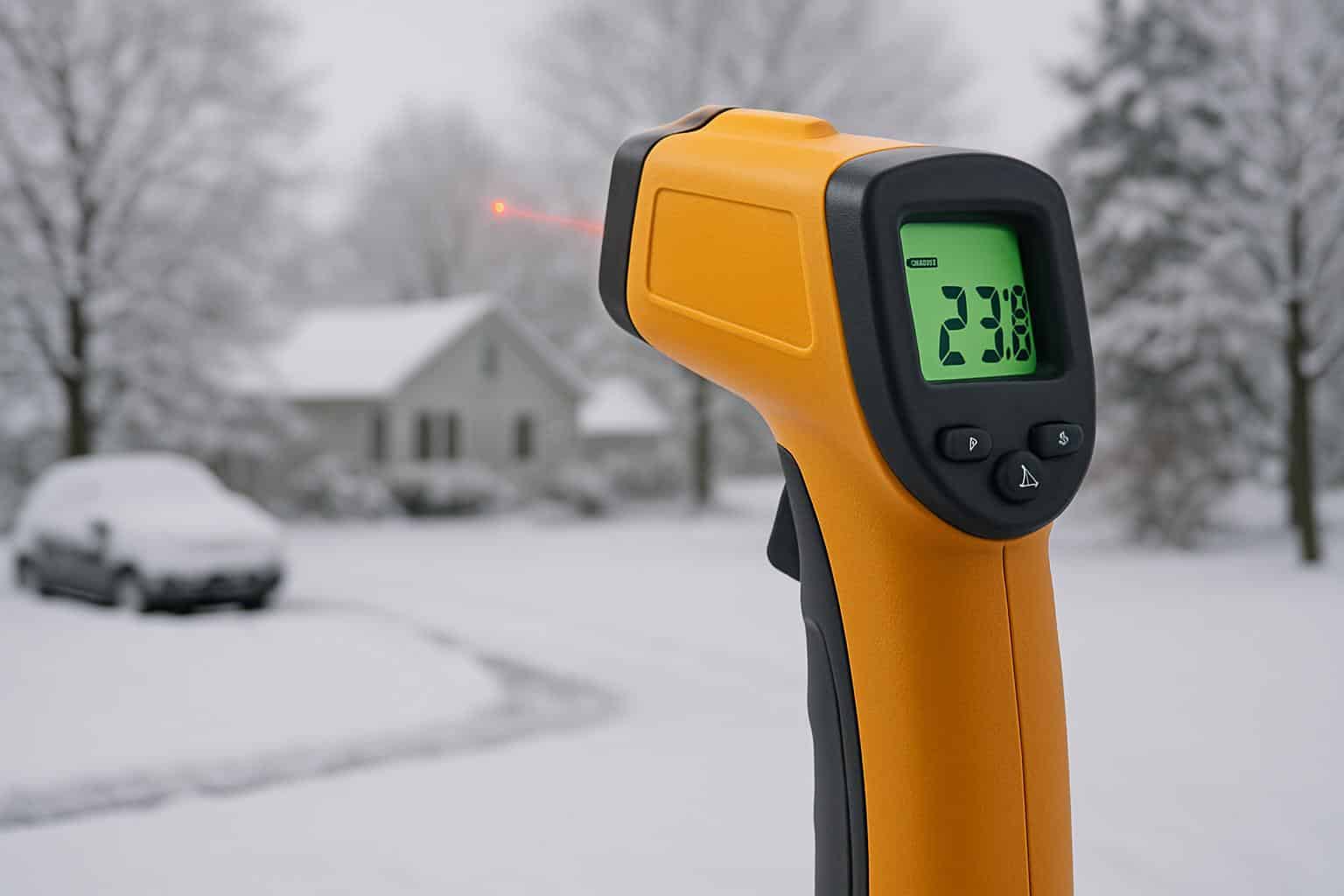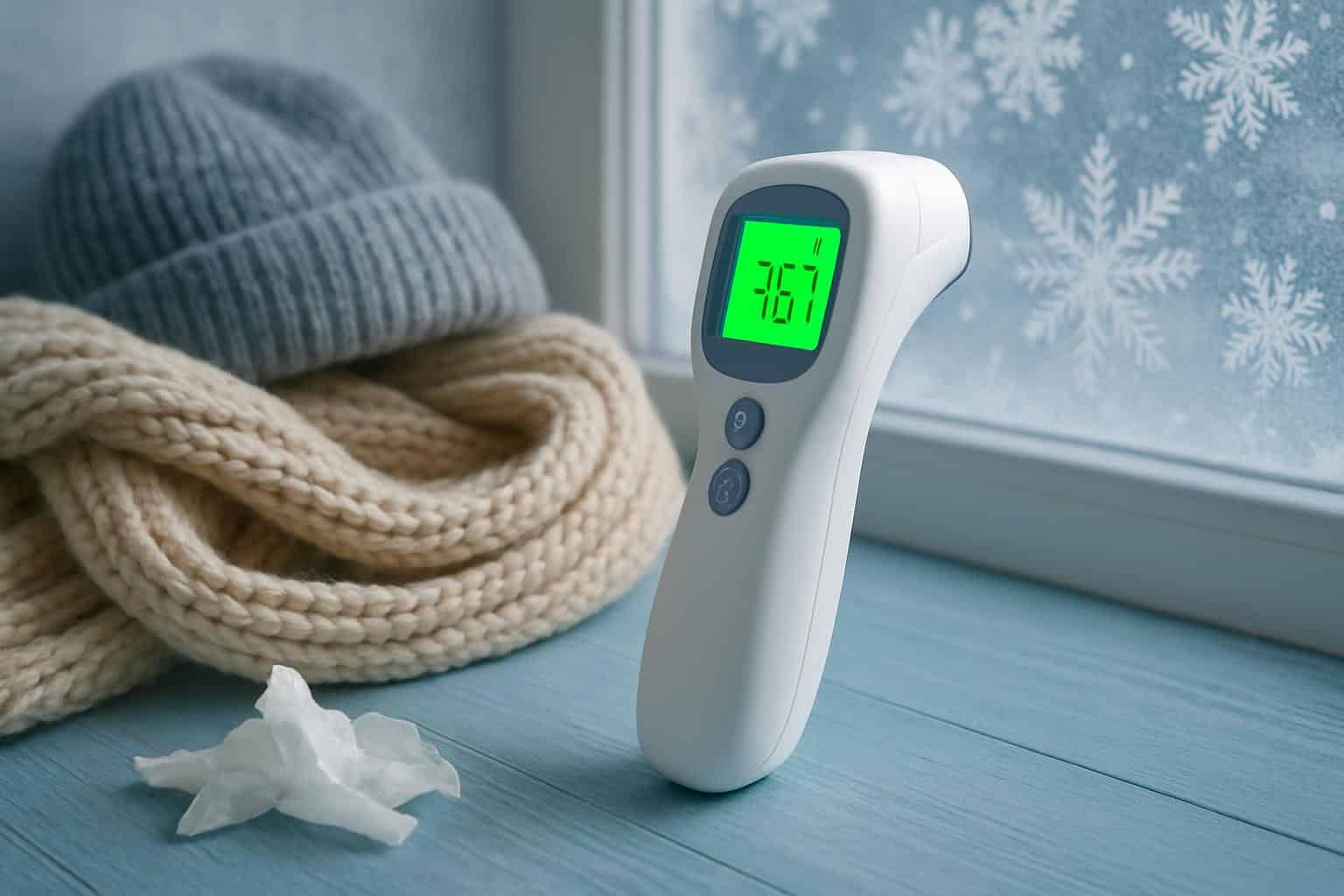The winter respiratory bugs are about to start making the rounds, and some days that fast and reliable fever check can save a morning — or sometimes even avoid a doctor visit. A well-reviewed no-touch infrared thermometer that offers readings in one second is now under $16, as opposed to an average list price of roughly $29.99 (so it’s a no-brainer ahead of the cold season).
Infrared models take a reading of forehead temperature without touching it, meaning less fuss with squirming toddlers, fewer late-night wake-ups and a cleaner process while flu cases rise in peak weeks.

At this price, what you’re paying for is mostly speed and convenience: this model includes features that used to be the province of more expensive devices.
Why You Need A No-Touch Thermometer At Home
A fever is one of the clearest early signs that a virus has set up shop. Fever is defined by public health guidance, including the Centers for Disease Control and Prevention, and is frequently cited as a threshold of 100.4°F (38°C) or higher. In an average U.S. flu season, the C.D.C. estimates there are millions of illnesses and hundreds of thousands of hospitalizations, with activity peaking in winter. Fast checks as soon as you notice tiredness, chills or a cough help families make better same-day decisions about whether to go to school, work and cancel travel plans.
Parents, in particular, appreciate no-touch measurements. Any fever in an infant 3 months of age or younger should prompt a call to the pediatrician, according to the American Academy of Pediatrics, and non-contact check-ups can aid caregivers in quickly verifying temperature without disturbing infants.
What You Get for $16 and Less in No-Touch Thermometers
This wallet-friendly forehead scanner is all about the speed and reliability of the results. Look for one-button operation, a backlit display that’s legible in a dark room and a color-coded fever indicator to get an at-a-glance warning. A no-disturb mode is perfect for sleeping children, with an optional audible fever alert.
At this price, practical add-ons matter: batteries in the box, automatic shutoff to conserve them, and fast toggling between Fahrenheit and Celsius.
Consumers can also take advantage of an object or surface mode, and the majority of sub-$20 models have one, too, allowing you to measure a baby bottle, bath water temperature or ambient room temperature in a bedroom — something that is convenient when you’re trying to get through morning routines.
Its small size goes well in a toiletry bag. Coaches, caregivers and frequent travelers will love how easy it is to take from practices to road trips or a relative’s house and keep health checks consistent in any environment.

How to Use an Infrared Thermometer Accurately at Home
According to the U.S. Food and Drug Administration, non-contact infrared thermometers operate reliably within an estimated range of about ±0.4°F (±0.2°C) if used properly in optimal conditions and are equipped to provide special measurement options for taking human temperatures.
And how to get there has less to do with price than technique:
- Place the device at the right distance — typically 1 to 2 inches from the center of the forehead. Read the manual and practice once or twice so that you can do it quickly when it matters.
- Stabilize the environment. If someone has just come in from the cold, or they’ve just stepped out of a hot shower, wait 15 minutes before taking a reading. Temperature extremes can skew results.
- Aim for clean, dry skin. Wipe sweat, brush the hair or get hats out of the way and do not sweep across makeup or bandages.
- Be consistent. Measure from the same spot and position every time. If a temperature is close to the border or doesn’t seem to fit with symptoms, take it again in 1 minute and confirm with another contact method, like an oral thermometer, especially for babies or those at higher risk.
It’s these fundamentals that matter more than racing to higher-end specs. In households in the real world, though, repeatability and good technique provide far more useful numbers than minuscule variances in lab accuracy.
When No-Touch Thermometers Pay Off in Daily Scenarios
Rise and shine triage: A 10-second morning scan before school or work reveals who needs rest, fluids or a telehealth call. Silent mode enables monitoring to ensure a sleeping baby is not disturbed.
Caregiving and travel: If you’re dividing your time between households, or caring for older relatives, a pocketable thermometer cuts down on guesswork when you don’t have your usual thermometer handy. This consistent accuracy helps you monitor changes over a few days.
Above and beyond body temps: Object mode helps you ensure the bath water isn’t too hot, while a bottle is warmed just so. It’s also handy for a quick check around the house, such as seeing if a room feels comfortable without breaking out a separate thermometer.
Bottom Line on the Deal for This Infrared Thermometer
With winter on its way, it is hard to go wrong with an infrared forehead thermometer for less than $16. You have instant readings, hygienic no-contact checks and a feature set — backlit screen, fever alerts, silent operation, object mode — that covers most household needs. Combine that with intelligent usage and fever basics from respected health organizations, and you’ll be more prepared for whatever the season has in store.

